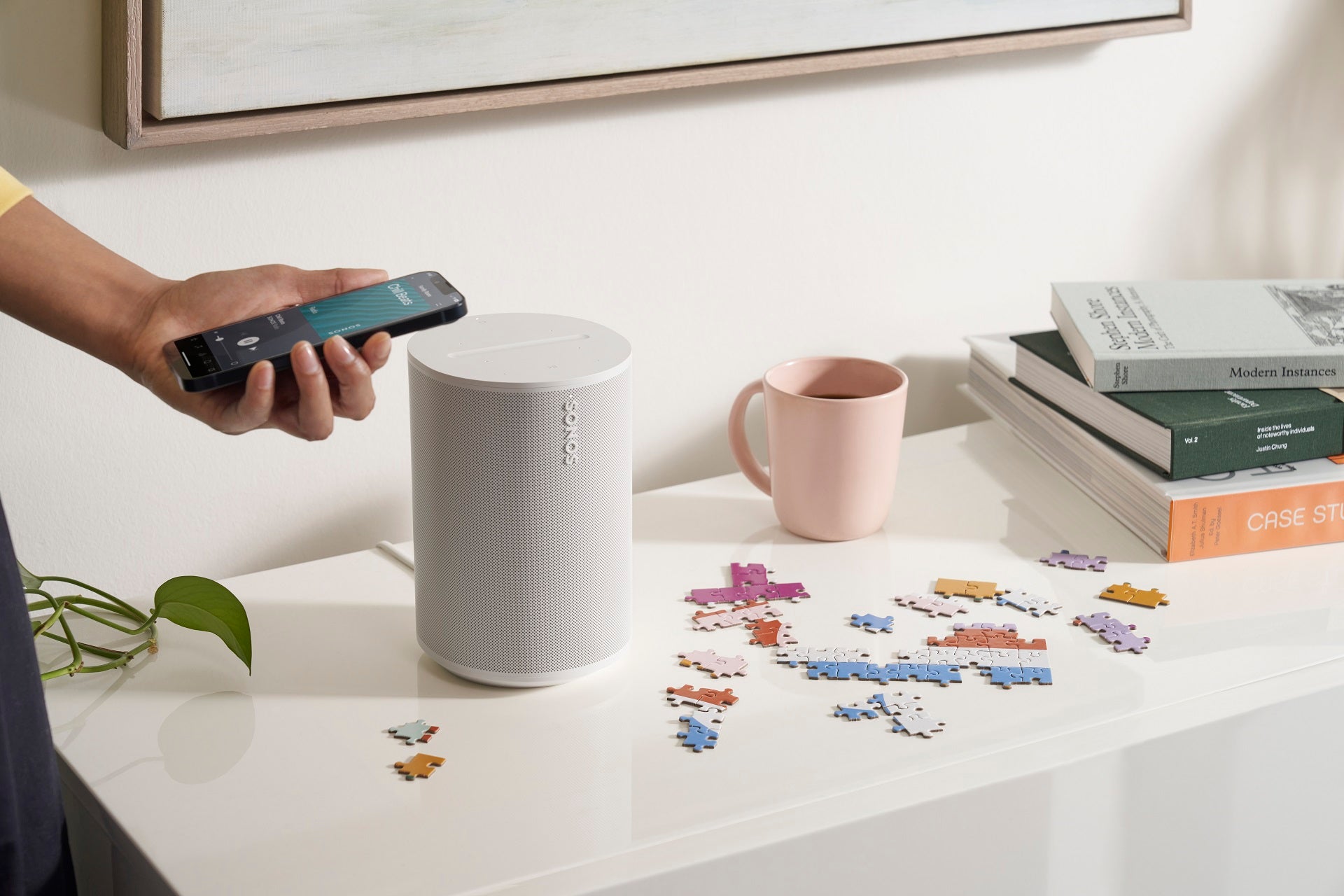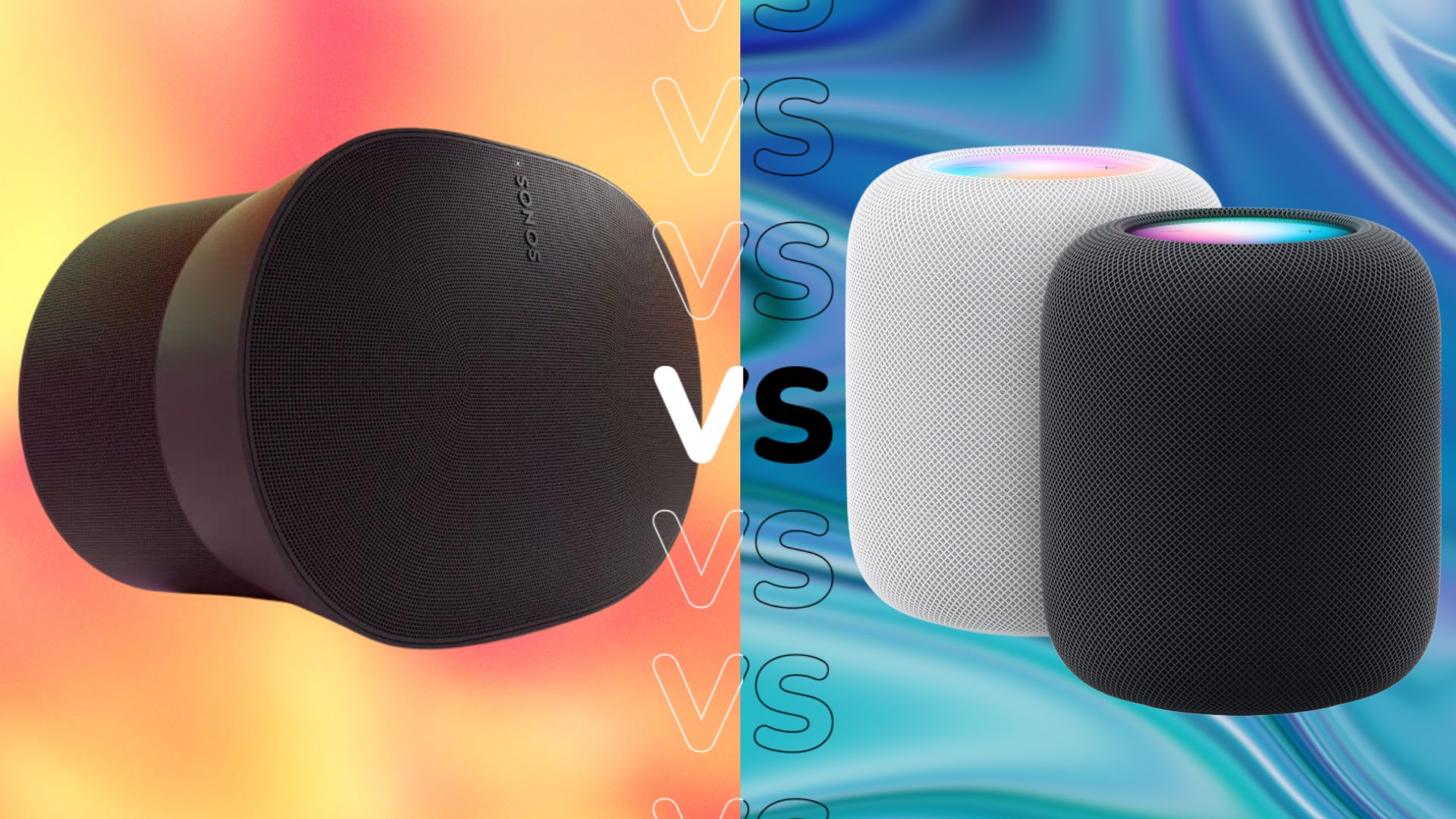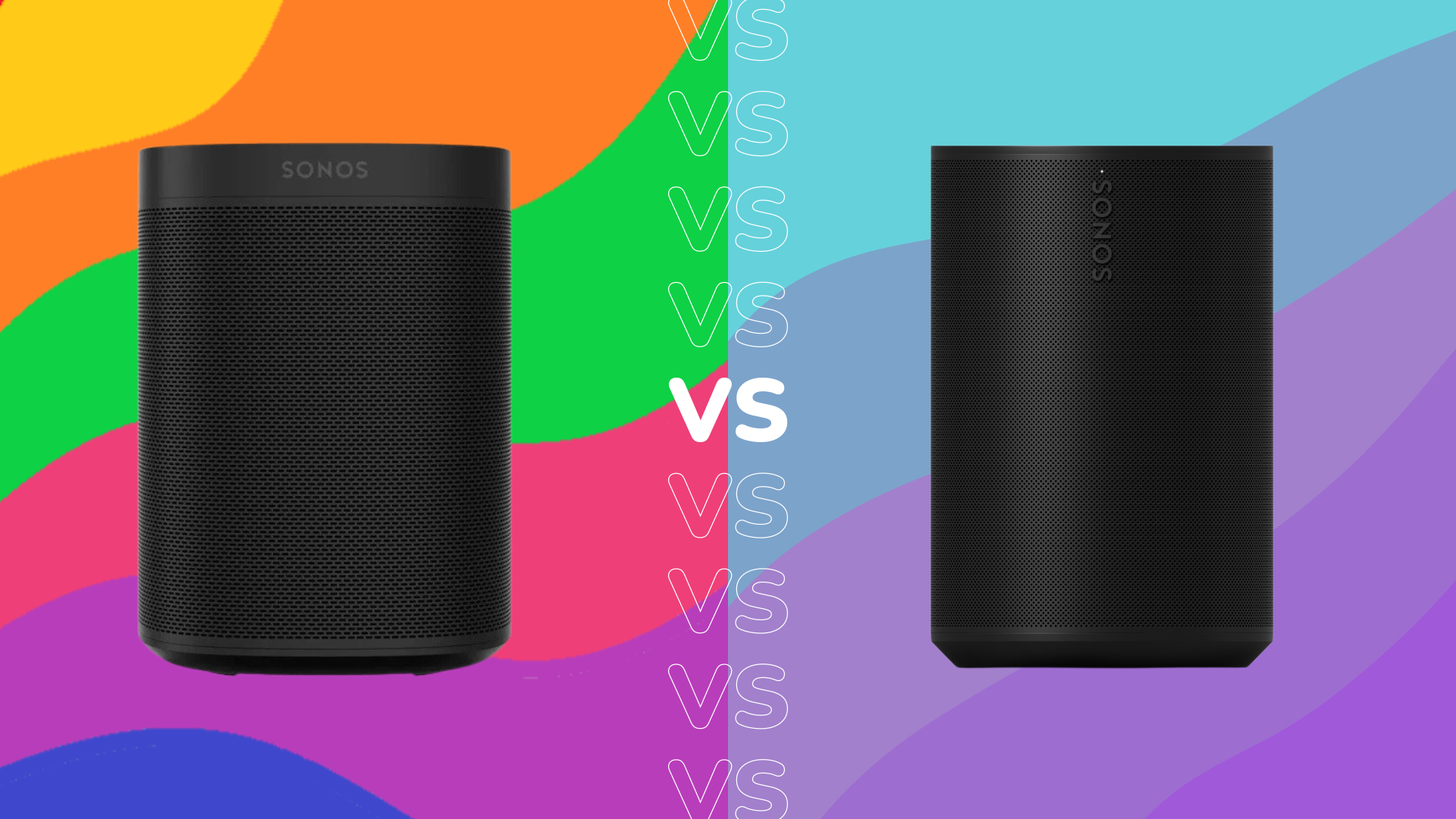Sonos Era 300 vs Amazon Echo Studio: What’s the difference?
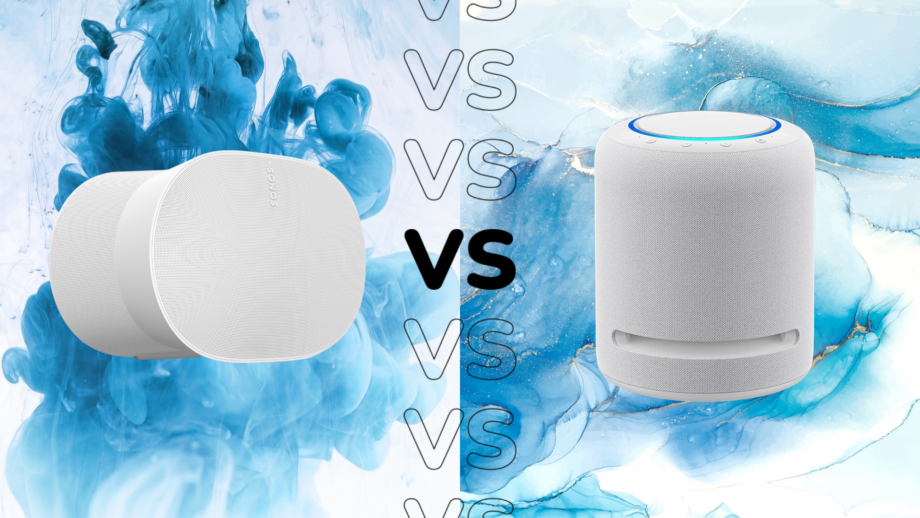
Sonos recently launched the Sonos Era 300, a new home speaker designed to envelop you in music.
But, how does it compare to Amazon’s own spatial audio-supporting smart speaker, the Echo Studio? Here’s our comprehensive guide to highlight the key differences.
Both speakers deliver spatial audio
Both the Sonos Era 300 and the Amazon Echo Studio offer spatial audio with the help of Dolby Atmos technology for immersive listening.
The two speakers adapt the sound to fit your room. In the case of the Era 300, Sonos uses Trueplay tuning for iOS and Android to optimise the sound according to the positioning of the speaker and acoustics of your space.
Likewise, the Echo Studio is able to automatically sense the acoustics of your space and fine-tune playback based on this. The speaker will do this as soon as you switch it on, with the process lasting around 30 seconds.
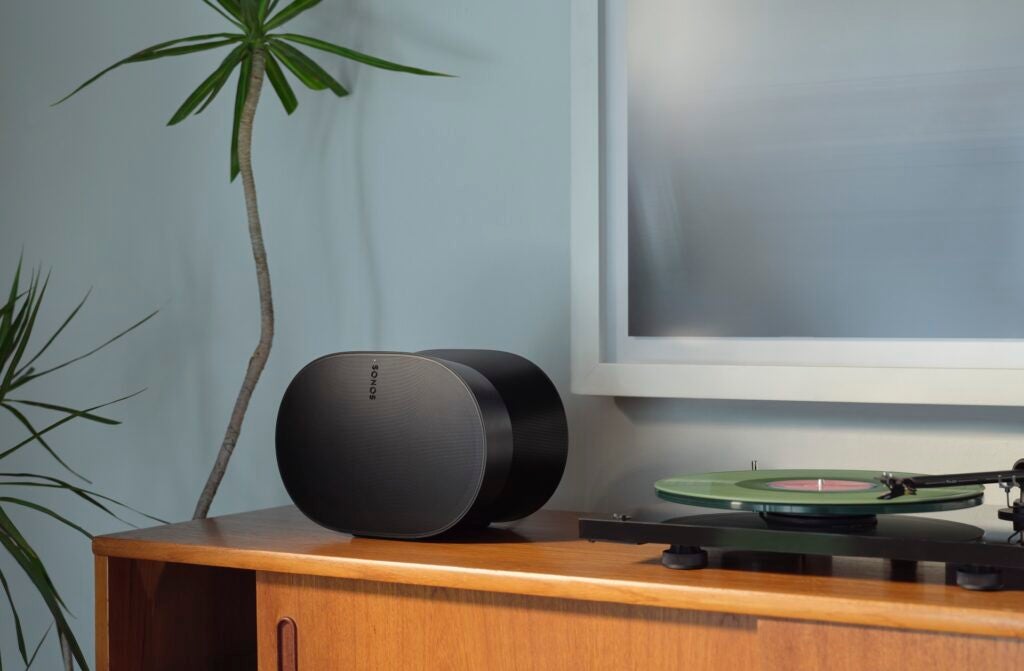
The Sonos Era 300 packs six drivers
The Sonos Era 300 is powered by six drivers that direct sound left, right forward and upward.
There are four tweeters to support high and mid-range frequencies. That includes a forward-firing mid-tweeter to create a smooth centre image and two side-firing mid-tweeters for stereo separation. There’s an upward-firing tweeter to reflect sound off the ceiling when streaming Dolby Atmos content and Sonos also benefits from two woofers angled left and right to boost low-end output and support stereo playback.
The Amazon Echo Studio, meanwhile, has two left and right-firing mid-range drivers, one upward-firing tweeter and a woofer with bass aperture to maximise the amount of bass.
Despite boasting one less woofer, the Echo Studio still offers plenty of bass – in fact, we found the bass could even be overpowering at times. It’s also the best-sounding Echo speaker by some distance. However, the midrange and treble can lack nuance, as we found in our review.
You’ll have to wait for our full review of the Sonos Era 300 to discover how the two speakers compare when it comes to performance.
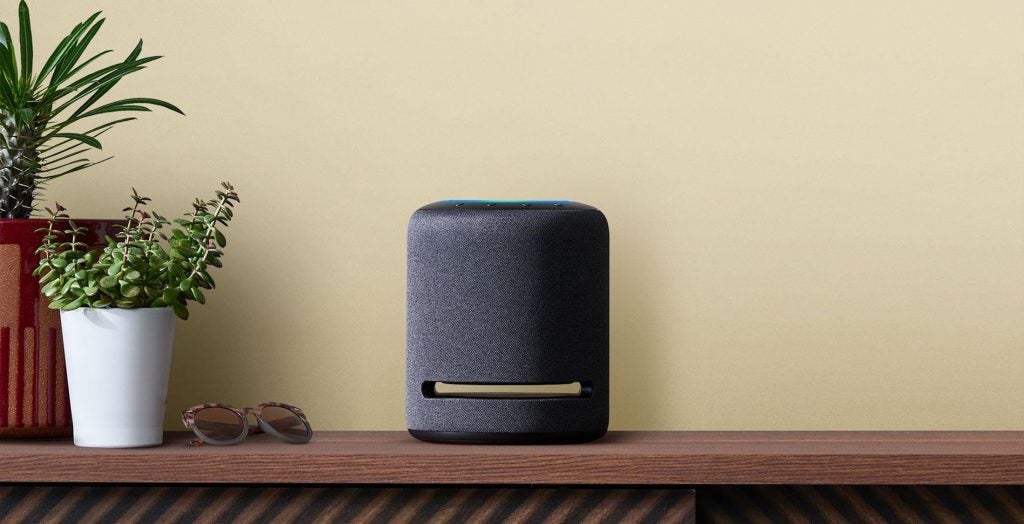
Amazon Echo Studio has excellent Alexa integration
Both speakers come with voice assistant support for hands-free control and, as you might expect, the Amazon Echo Studio comes with the company’s own Alexa assistant deeply baked in.
The voice assistant can play music, set alarms, read traffic updates, check the weather and more. You can use the Echo Studio as a smart home hub and control compatible smart home devices – such as light bulbs, plugs, thermostats and cameras – from the speaker using Alexa and Zigbee and the speaker can also be paired with Fire TV devices for a home theatre setup.
The one downside to the Echo Studio in this regard is that it does require Alexa to set it up, regardless of whether you plan to use the voice assistant. For this reason, those who don’t like the Amazon assistant will probably want to look elsewhere.
The Sonos Era 300, on the other hand, uses Sonos Voice Control to play music and manage your system hands-free. The speaker is also Alexa-compatible, meaning you can always rely on the Amazon smart assistant to command compatible smart home devices and give you important reminders.
The Amazon Echo Studio is significantly cheaper
The Amazon Echo Studio is priced at $199/£219, while the Sonos Era 300 costs more than twice that at $449/£449. This makes the Sonos speaker quite a bit more of an investment compared to the Echo Studio.


